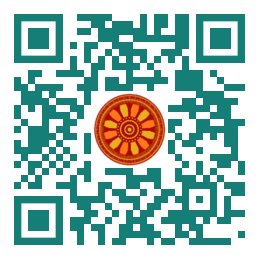
:: International Transaction Journal of Engineering, Management, & Applied Sciences & Technologies
http://TuEngr.com

ISSN 2228-9860
eISSN 1906-9642
CODEN: ITJEA8
FEATURE PEER-REVIEWED ARTICLE
Vol.12(3) (2021) |
Toxicological and Irritating Effects of Protein Hydrolyzate of Microbial Origin
 Albina Luneva (Department of Parasitology, Veterinary Examination and Pet Hygiene, Kuban State Agrarian University named after I.T. Trubilin, RUSSIA),
Albina Luneva (Department of Parasitology, Veterinary Examination and Pet Hygiene, Kuban State Agrarian University named after I.T. Trubilin, RUSSIA),
Azamat Shantyz (Department of Therapy and Pharmacology, Kuban State Agrarian University named after I.T. Trubilin, RUSSIA),
Evgeny Marchenko, Ekaterina Yeganyan (Department of Parasitology, Veterinary Examination and Pet Hygiene, Kuban State Agrarian University named after I.T. Trubilin, RUSSIA),
Sergei Shlykov (Department of Technology for the Production and Processing of Agricultural Products, Stavropol State Agrarian University, RUSSIA).
Disciplinary: Veterinary, Biotechnology.
doi: 10.14456/ITJEMAST.2021.53
Keywords: Biological product; Toxicity.; Irritant effect; Half-lethal dose; Laboratory animals; Poultry farming; Bacterial hydrolysate; Biochemical parameters; Morphological parameters.
AbstractThis article presents a studying the toxicological and irritating protein hydrolyzate effect for further use in industrial poultry farming. The studies' results have shown that the protein hydrolyzate used in the research work is safe in the studied dosages. During an acute experiment, it was not possible to establish the LD50. The death of the experimental mice and rats was not recorded. There were no signs of a violation of their health during the experiment. The animals remained mobile, active, and ate food well. Clinical symptoms of intoxication did not appear. In the experiments, the hydrolyzate does not cause the death of laboratory animals and loss of body weight during the experiments. On the contrary, it increases the growth of laboratory mice and rats within the range of 2.0-8.0% concerning the control group.Paper ID: 12A3K
Cite this article:
Luneva, A., Shantyz, A, Marchenko, E., Yeganyan, E., and Shlykov, S. (2021). Toxicological and Irritating Effects of Protein Hydrolyzate of Microbial Origin. International Transaction Journal of Engineering, Management, & Applied Sciences & Technologies, 12(3), 12A3K, 1-13. http://doi.org/10.14456/ITJEMAST.2021.53
References
- GOST. (2000). Medical products. Assessment of the biological effect of medical devices. Part 10. Investigation of irritant and sensitizing effects, GOST R ISO 10993.10-99, 1999-12-29, Gosstandart of Russia, 38 p.
- Tishkov, A. I., Argunov, M. N., Lyashko, N. I. (1987). Guidelines for the toxicological assessment of new drugs for the treatment and prevention of non-communicable animal diseases. Voronezh, 23 p.
- Smirnov, A. M., Dorozhin, V. I. (2008). Scientific and methodological aspects of the study of toxic properties of pharmacological drugs for animals. Russian Agricultural Academy, Moscow, 120 p.
- SP 2.2.1.3218-14 (2014). Sanitary and epidemiological requirements for the device, equipment and maintenance of experimental biological clinics (vivariums), 7 p.
- Khabriev, R.U. (2005). Guidelines for the experimental (preclinical) study of new pharmacological substances: publishing «Medicine», 832 p.
- Lysenko, Yu.A., Koshchaev, A.G., Lysenko, A.A., Omarov, R.S., Shlykov, S.N. (2020). Biological properties of microorganisms isolated from drone milk of honeybees. International Transaction Journal of Engineering, Management and Applied Sciences and Technologies.11(12), 11A12K, 1-10.
- Luneva, A.V., Lysenko, Yu.A., Koshchaev, A.G., Nesterenko, A.A., Guzenko, V.I. (2019). Comprehensive biosafety assessment of additives based on live microorganisms. International Journal of Engineering & Advanced Technology. 9(1), 2477-2483.
- Lysenko, Yu.A., Koshchaev, A.G., Luneva, A.V., Omarov, R.S., Shlykov, S.N. (2021). Organic meat production of broiler chickens hubbard Redbro cross. International Journal of Veterinary Science, 10(1), 25-30.
- Luneva, A., Koshchayev, A., Nesterenko, A., Volobueva, E., Boyko, A. (2020). Probiotic potential of microorganisms obtained from the intestines of wild birds. International Transaction Journal of Engineering, Management and Applied Sciences and Technologies, 11(12), 11A12E, 1-9.
- Lysenko, Y., Luneva, A., Koshchaev, A., Lifentsova, M., Gorpinchenko, E. (2019). Quality assessment of biological product of microbial origin. International Journal of Engineering & Advanced Technology. 9(1), 2484-2488.
- Koshchayev, A., Luneva, A., Murtazaev, K., Lysenko, Yu., Omarov, R. (2020). The study of the effectiveness of the use of a new feed supplement albit-bio in the diet of quail. Advances in Animal & Veterinary Sciences. 8(12), 1333-1339.
Other issues:
Vol.12(2)(2021)
Vol.12(1)(2021)
Vol.11(16)(2020)
Vol.11(15)(2020)
Vol.11(14)(2020)
Archives
Call-for-Papers
Call-for-Scientific PapersCall-for-Research Papers: ITJEMAST invites you to submit high quality papers for full peer-review and possible publication in areas pertaining engineering, science, management and technology, especially interdisciplinary/cross-disciplinary/multidisciplinary subjects.
To publish your work in the next available issue, your manuscripts together with copyright transfer document signed by all authors can be submitted via email to Editor @ TuEngr.com (no space between). (please see all detail from Instructions for Authors)
Publication and peer-reviewed process:
After the peer-review process (4-10 weeks), articles will be on-line published in the available next issue. However, the International Transaction Journal of Engineering, Management, & Applied Sciences & Technologies cannot guarantee the exact publication time as the process may take longer time, subject to peer-review approval and adjustment of the submitted articles.